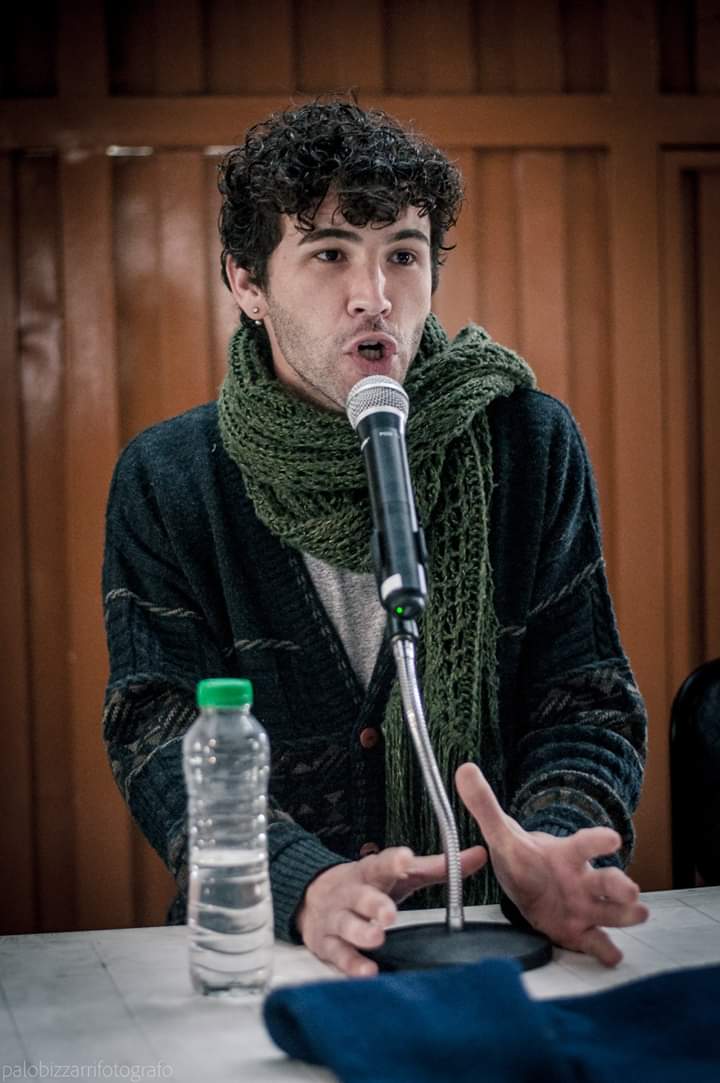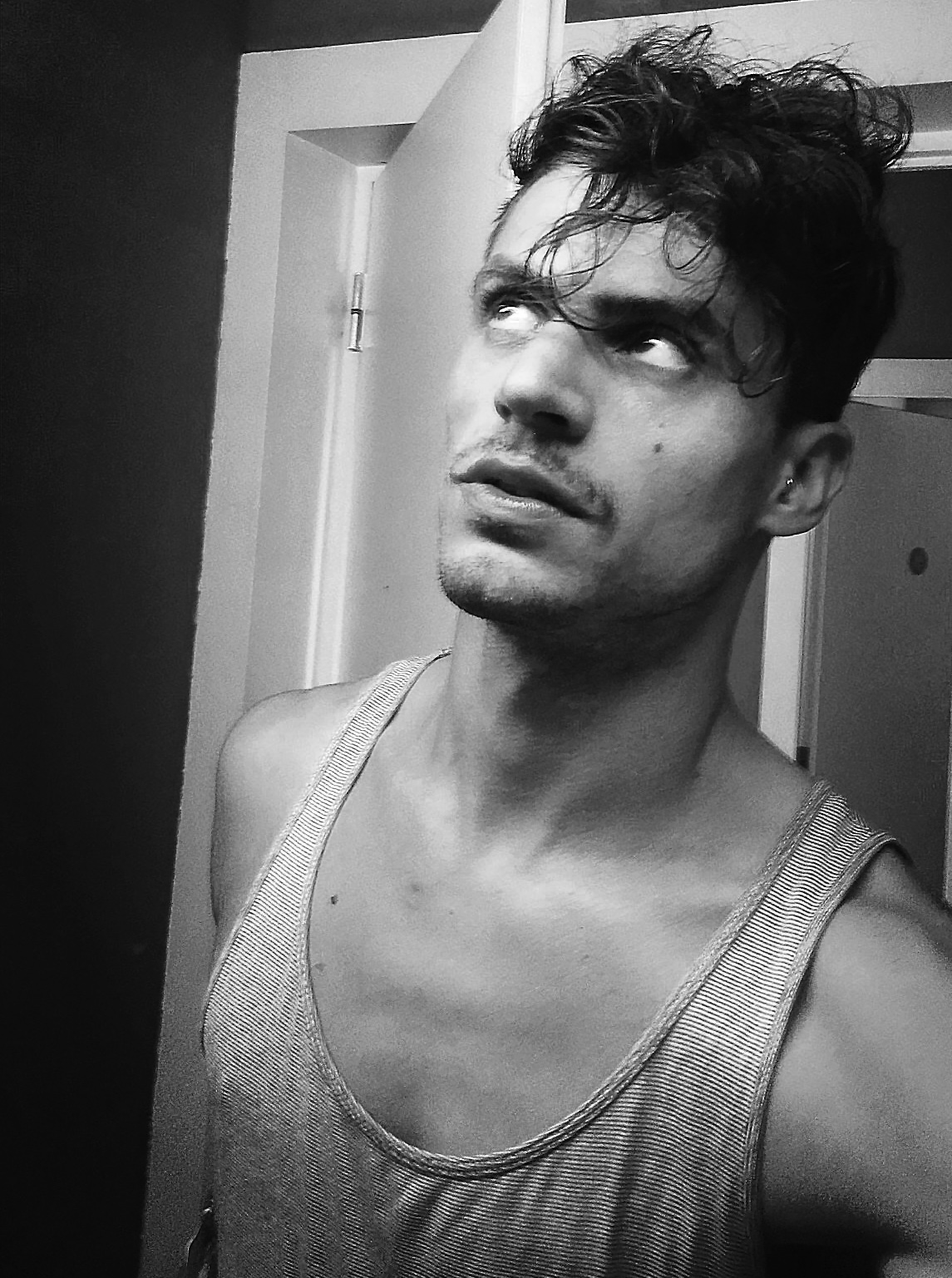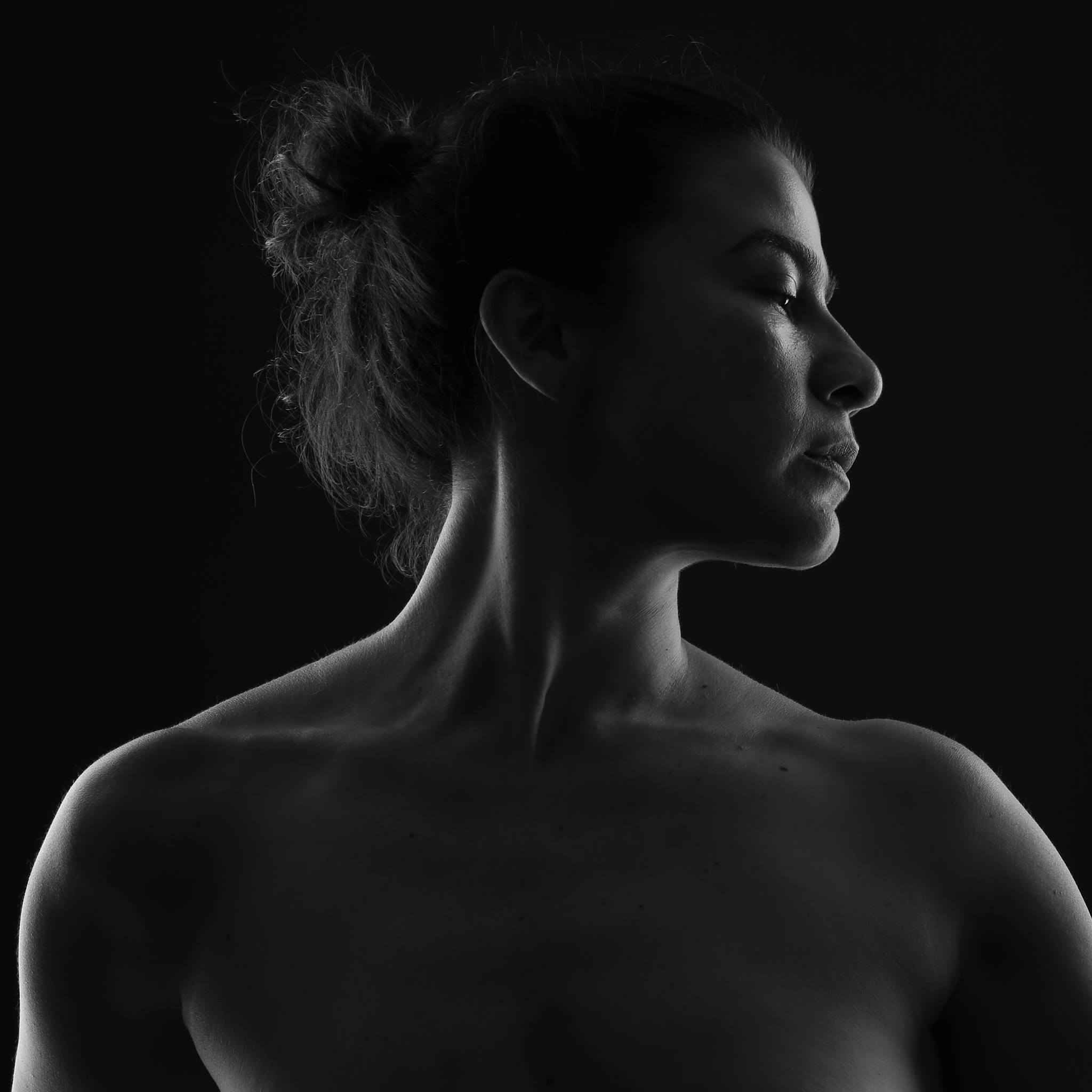PINA BAUSCH FELLOWS 2019
Dies sind die neuen Stipendiaten des PINA BAUSCH FELLOWSHIP 2019
Das Pina Bausch Fellowship ist ein gemeinsam entwickeltes Stipendienprogramm der Kunststiftung NRW und der Pina Bausch Foundation. Seit 2016 sind zehn Stipendiat*innen im Rahmen des Fellowship gefördert worden. Für das Stipendienjahr 2019 hat die international besetzte Jury vier neue Stipendiat*innen aus 132 Bewerbungen ausgewählt.

Ariel Moreira
Ariel Moreira lebt in Unquillo (Argentinien) und hat vor kurzem seinen Abschluss in zeitgenössischem Tanz von der Universität Cordoba erhalten. Ariel möchte die Subbody Resonance Butoh Himalayan Dance School (Indien) besuchen, an der er Butoh Tanz erforschen wird.
Die Jury über Ariel Moreira:
“We were struck by the strength of expression of Ariel Moreira ́s deeply personal and unconventional work, and the powerful resonance and relation with the natural world and all that it inspires and provokes. In his statement he declares “I am interested in those “dark” aspects of life conventionally not dealt with in commercial western dance forms, such as illness, insanity, poverty or death. I am convinced that there is great political potential in embracing such culturally avoided, obscure aspects of human existence, as this may be the key to personal deconstruction and, consequently, to rethinking the ways we move and live”. He aspires to “digging into one’s self and shaping the unknown aspects of our mind into a genuine, deconstructed dance”, and in this his choice of mentor, Rhizome Lee and the Subbody Resonance Butoh Himalaya Dance School, is completely coherent in terms of the nature and quality of the work developed there, as well as for the impact of the natural setting of the school and its influence on the work. An urgent sense of humanity in a hyperconnected and digitized world where our connection to nature is lost: this seems to characterise and unite both the applicant and partner, in spite of the distance separating their geographical situation and their social and political context.”

Lee_Méir_Portrait_c_André_Lewski
Lee Méir ist freiberufliche Choreografin und Performerin, die in Berlin und Tel-Aviv arbeitet. Ihre Arbeit untersucht die Spannungen zwischen Sprache, Bewegung, Klang und Bedeutungsproduktion. Während ihrer Zeit als Stipendiatin an der École des Sables (Senegal) wird sie sich auf die Art und Weise konzentrieren, wie Rhythmus als Mittel zur Schaffung einer Verbindung zwischen den Menschen dient.
Die Jury über Lee Méir:
„Lee Meir offers another perspective on the exploration of the relation between body and movement, and says she is “interested in the way that sharing rhythm between modalities yields an unspoken sense of togetherness and continuity between humans. In African dances the elements, above all, support one another, in creating a situation in which everyone presents (whether dancing / singing / drumming / observing) are part of the “dance situation”, due to being part of the rhythm. She will explore this relation between body and rhythm at L ́Ecole des Sables, a unique space to find the roots of the relation between music, body and a collective methodology, connected to a deep history and experience of dance and movement. Lee ́s work is compelling and striking in the boldness of her artistic choice and the way she implements and develops it. The contrast in style, aesthetic and language between her and her partner, and her desire to delve into this immersive partnership through the connecting bridge of rhythm, is intriguing and promises a potentially enriching and fruitful collaboration. We feel that Lee Meir will greatly benefit in working with a partner who is a contrast to her own work, acquiring a new set of tools and sensitivities that will enhance her artistic capabilities and experience.“

Marc_Philipp_Gabriel_Portrait_c_Marc_Philipp_Gabriel.
Marc Philipp Gabriel ist ein Performancekünstler aus Berlin, der sich mit Körper, Stimme, Installation, Video und Architektur aus der Perspektive von Tanz und Bewegung beschäftigt. Sein Fellowship-Kooperationspartner ist die Dançando com a Diferença Tanzkompanie (Portugal), die mit körperlich und geistig beeinträchtigten Menschen aller Altersgruppen zusammenarbeitet. Marc wird Einblicke in ihr Auffassung von Tanz und ihre Arbeitsweise gewinnen, um sein Verständnis für das gemeinsame Schaffen kreativer Räume mit Menschen mit Behinderung zu vertiefen und um seine Wahrnehmung und Sensibilität gegenüber der künstlerischen Arbeit mit all unseren Körpern zu verbessern.
Die Jury über Marc Philipp Gabriel:
“There is a refreshing candidness and honesty that drew us to Marc Gabriel ́s approach. Through his work one sees clear intimacy in his own search, taking the risk of an experimental form with a high social accent. As expressed in his statement, Gabriel declares “I am learning to cultivate being honest to my own needs (which eventually has lead me to dance!) and to see not-fitting-in as a strength rather than weakness. I often tell people that I love dance “because you can’t fake anything without everybody noticing”. Pretending something to yourself is pointless, so for me dance practice is practicing honesty in life. That’s why I love the motto “We dance with the body, not despite of the body” of Dançando com a Diferença. We are curious to see how the time spent with his chosen partner will inform and influence his approach and crafting of his own work, in terms of enriching his skills as well as widening his perspectives. We are hopeful that it will translate into further and compelling ways of expressing Marc’s deep humanity.”

Martha Hincapié Charry
Martha Hincapié Charry ist eine kolumbianische Choreografin, Tänzerin, Performerin und Intendantin. Sie lebt in Berlin. Sie hat Tanz zuerst in Kolumbien studiert, bevor sie ihr Studium in Tanztheater und Solotanz an der Folkwang Universität der Künste abschloss. Sie wird ihr Stipendium in Sierra Nevada verbringen, wo sie die Rhythmen der vier indigenen Gemeinschaften, die Teil der Tairona-Kultur sind, verfolgen und neue Tänze, Intentionen und Philosophien erlernen wird, welche die Rituale und kollektiven Bewegungen aufrechterhalten, die bei Zeremonien, Opfergaben und Feierlichkeiten praktiziert werden.
Die Jury über Martha Hincapié Charry:
„Martha Hincapié Charry is seeking to connect to her roots through a human encounter in the current context of a native indigenous community of her homecountry, Colombia. Exploring their traditional dance forms, at the edge of western civilization seems to be an answer to this sense of urgency. She expresses that her proposal “is the result of my choreographic interests since the subject of the indigenous pre-colonial traditions is part of my previous research. The importance of integrating this knowledge in my practice as a choreographer is given not only by the fact that it is endangered but also because it is rare to get access to it since they perform their ceremonies and celebrations privately. In the dialogues we have had, the groups Kogi and Wiwa have been open and interested in the fact of having an outsider witness of their dances”. We, the jury, felt it was important to seize this rare opportunity of a welcoming encounter with these native communities of Colombia and encourage and support this unique and potentially precious exchange through the medium of dance.“

Die neue Jury für das Pina Bausch Fellowship: Eun-Me Ahn, Shantala Shivalingappa, Enrique Rivera (v.l.n.r.).
Foto: Sala Seddiki, © Pina Bausch Foundation
The new judging panel for the Pina Bausch Fellowship 2018 and 2019: Eun-Me Ahn, Shantala Shivalingappa, Enrique Rivera (f.l.t.r.).
Photo: Sala Seddiki, © Pina Bausch Foundation
Enrique Rivera (Chile) ist unabhängiger Kurator und audiovisueller Forscher. Er studierte audiovisuelle Kunst am Filminstitut der Universität von Chile und später Filmregie an der Universidad Mayor in Santiago. In verschiedenen Ländern hat er Forschungsreihen und Installationen auf Basis von elektrischer Energie und nicht greifbaren Mitteln als Strategie der Repräsentation durchgeführt. Er gründete und leitete die Person Gallery in Santiago (2003) und rief zusammen mit Isabel García das Archiv für Videokunst am Kulturzentrum La Moneda ins Leben.Außerdem entwickelte er das Forschungsprojekt Cybersyn sowie eine Ausstellung dazu am ZKM in Karlsruhe. Er ist der Leiter der Medienkunst Biennale in Chile sowie Präsident der chilenischen Video and Electronic Arts Corporation. Zurzeit liegt der Fokus seiner Arbeit auf der kuratorischen Rahmung der 13. Medienkunst Biennale, die die Beziehung zwischen Menschen und Naturgewalten thematisiert sowie auf dem Forschungs- und Residenzprogramm der Plattform für Kunst und Astronomie Artes Espaciales. http://artesespaciales.cchv.cl/
Shantala Shivalingappa ist in Indien geboren und in Paris aufgewachsen. Sie ist Tänzerin und Choreografin und wurde inspiriert durch den klaren und anmutigen Tanzstil Vempati Chinna Satyams. Sie widmete sich dem Kuchipudi (klassische südindische Tanzform) und erhielt ein intensives und strenges Training von ihrem Lehrer. Von dem Wunsch geprägt Kuchipudi einem westlichen Publikum näher zu bringen, hat sie auf bekannten Festivals und in wichtigen Theaterhäusern gespielt. Seit ihrem 13. Lebensjahr arbeitet sie mit Künstlern wie Maurice Béjart, Peter Brook, Bartabas, Pina Bausch und Amagatsu zusammen. 2013 wurde sie für ihre herausragende Performance in dem Solo Shiva Ganga mit dem angesehenen New Yorker Bessie Award ausgezeichnet. Shivalingappas Stücke touren weltweit, außerdem widmet sie sich der Erweiterung ihrer choreografischen Arbeit im Kuchipudi-Stil und der Erkundung interdisziplinären Arbeitens mit verschiedenen Künstlern.
Eun-Me Ahn (Korea) hat zeitgenössischen Tanz an der Ewha Frauenuniversität studierte und gründete bereits 1988 ihre eigene Company. 1991 ging sie nach New York und setzte dort an der Tisch School of the Arts ihr Studium fort. Seit 2001 lebt und arbeitet sie als Tänzerin und Choreografin wieder in Korea und entwickelte dort zahlreiche Arbeiten. Drei ihrer Solo-Arbeiten zeigte sie 2001 im Rahmen des Pina Bausch Festivals in Wuppertal und auch zu den darauffolgenden Ausgaben des Festivals 2004 und 2008 wurde sie eingeladen. Als Tänzerin und Choreografin erhielt sie bereits zahlreiche Auszeichnungen.
„Es ist eine große Ehre, dass wir wieder solch außergewöhnliche Persönlichkeiten für die Jury gewinnen konnten. Ich erlebe die drei als sehr unterschiedlich und ich glaube, das ist gut für die Auswahl der Stipendiat*innen. Alle drei haben einen sehr offenen und zugleich klaren Blick auf die Potenziale, die Kreativit.t, auf Mut und Entschlossenheit.“
Salomon Bausch, Vorstandsvorsitzender Pina Bausch Foundation











